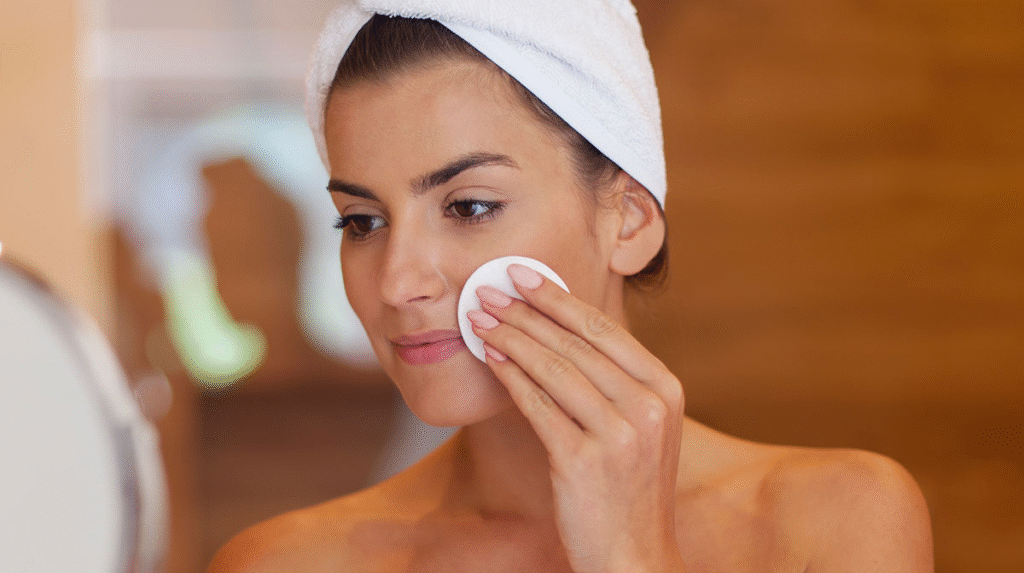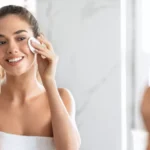Skincare Regimen is no longer a one-size-fits-all routine. It’s a personalized, time-sensitive ritual that caters to your skin’s specific needs—morning and night. Understanding how your skin behaves at different times of the day is key to achieving a radiant, healthy complexion. This guide breaks down the science and strategy behind morning and nighttime skincare, helping you determine when to use what for optimal results.
Understanding Your Skin’s Natural Rhythm Skincare Regimen

Your skin, like your body, follows a circadian rhythm—a 24-hour biological cycle influenced by light and darkness. This rhythm impacts everything from oil production to cell regeneration. Here’s how it works:
Morning: Protection Mode
In the morning, your skin shifts into defense mode, preparing to combat:
- UV rays
- Pollution
- Environmental aggressors
- Free radicals
Oil production increases, and your skin barrier thickens slightly to protect itself from external stressors.
Night: Repair Mode
At night, your skin moves into recovery mode:
- Blood flow to the skin increases
- Cell turnover and collagen production peak
- Repair of damage (sun, inflammation) accelerates
This is the best time to use potent treatments like retinoids, peptides, and exfoliants.
Your Morning Skincare Regimen: Shield and Hydrate
Goals:
- Protect
- Hydrate
- Prepare the skin for makeup (if applicable)
Step-by-Step Breakdown
1. Cleanser
Use a gentle, non-stripping cleanser to remove overnight oil and debris.
- Ideal for: Oily or combination skin
- Tip: Don’t over-cleanse; a splash of water is enough for dry skin
2. Toner (Optional)
A hydrating toner can balance pH and add moisture.
- Choose alcohol-free formulas with ingredients like glycerin or rose water.
3. Antioxidant Serum
Vitamin C is the hero ingredient in the morning.
- Benefits: Brightens, protects against UV damage, reduces pigmentation
- Bonus: Helps boost the efficacy of sunscreen
4. Moisturizer
Locks in hydration and preps the skin for SPF and makeup.
- Use gel-based moisturizers for oily skin, creamier ones for dry skin.
5. Sunscreen (Non-Negotiable)
SPF 30 or higher is essential—even indoors.
- Broad-spectrum sunscreens protect from UVA and UVB rays.
- Look for formulas with zinc oxide or titanium dioxide for sensitive skin.
Your Nighttime Skincare Regimen: Heal and Rejuvenate

Goals:
- Repair damage
- Stimulate cell renewal
- Deeply nourish the skin
Step-by-Step Breakdown
1. Double Cleanse
Especially important if you wear makeup or sunscreen.
- First cleanse: Oil-based cleanser or balm to dissolve makeup
- Second cleanse: Water-based cleanser to clean residual dirt
2. Exfoliant (2-3 times a week)
Use a chemical exfoliant (like glycolic or salicylic acid) to clear dead skin cells.
- Avoid overuse to prevent barrier damage.
3. Treatment Serums
Time to bring out the heavy-hitters:
- Retinol/Retinoids: Boost collagen, reduce acne and fine lines
- Niacinamide: Reduces redness, balances oil
- Peptides: Stimulate repair and elasticity
4. Eye Cream
Addresses concerns like dark circles, puffiness, or crow’s feet.
- Night creams often contain caffeine or peptides.
5. Moisturizer or Night Cream
Look for richer formulations with ceramides, squalane, or hyaluronic acid.
- Sleeping masks can add extra hydration for dry skin types.
6. Facial Oils (Optional)
Seal in all the goodness with an oil like argan, jojoba, or rosehip.
- Great for dry or mature skin types.
Ingredients Best Suited for Morning Vs Night
| Ingredient | Best Time to Use | Benefits |
|---|---|---|
| Vitamin C | Morning | Antioxidant, brightens, UV protection |
| Niacinamide | Both | Calms skin, reduces pores |
| Retinol/Retinoids | Night | Cell turnover, anti-aging |
| Peptides | Night | Collagen boosting, repair |
| Hyaluronic Acid | Both | Hydration |
| Salicylic Acid | Night | Acne treatment, exfoliation |
| Sunscreen | Morning | UV protection |
Common Skincare Mistakes to Avoid
Using Retinol in the Morning
Retinoids break down in sunlight, reducing their efficacy and increasing the risk of irritation.
Skipping Sunscreen
Even on cloudy days, UV rays can cause damage. Make sunscreen the last step of your AM routine.
Layering Incompatible Ingredients
Avoid combining retinol with acids like AHAs/BHAs or Vitamin C unless advised by a dermatologist.
Over-Exfoliating
Too much exfoliation damages your skin barrier, causing redness, peeling, or sensitivity.
Customizing Your Skincare Based on Skin Type
Oily Skin
- AM: Use a foaming cleanser, mattifying moisturizer, and gel-based sunscreen
- PM: Include salicylic acid and a light, non-comedogenic moisturizer
Dry Skin
- AM: Hydrating cleanser, hyaluronic acid serum, rich moisturizer, SPF
- PM: Cream-based cleanser, ceramide-rich cream, nourishing oil
Sensitive Skin
- AM: Minimal routine with calming ingredients like aloe or chamomile
- PM: Avoid strong actives, opt for barrier-repair creams
Combination Skin
- AM: Balance hydration and oil-control
- PM: Alternate between actives and hydration-focused treatments
Skin-Cycling: A New Trend in Night Routines

Skin-cycling involves rotating products to avoid overuse of actives:
- Day 1: Exfoliation
- Day 2: Retinol
- Day 3 & 4: Recovery with hydration
This method reduces irritation while delivering effective results.
How Lifestyle Affects Your Morning & Night Routine
Sleep
Quality sleep enhances skin repair. A consistent night routine supports this regeneration.
Diet
Antioxidant-rich foods (berries, greens) and hydration boost both AM and PM routines.
Stress
Stress impacts your skin barrier and inflammation. A consistent routine helps create balance.
Also Read : Essential Products And Tips For Daily Sensitive Skin Care
Conclusion
Knowing when to use what in your skincare regimen can be a game-changer. Your morning routine should shield and prepare your skin for daily stressors, while your nighttime routine should nourish and repair. Tailor your ingredients, products, and steps based on your skin type and goals—but most importantly, be consistent. Remember, glowing skin isn’t just about what you use—it’s about when and how you use it.
Frequently Asked Questions (FAQs)
What is the main difference between morning and night skincare?
Morning routines focus on protection from environmental damage, while night routines emphasize repair and regeneration.
Can I use the same products morning and night?
Some ingredients like hyaluronic acid or niacinamide are safe for both. However, retinoids and exfoliants should only be used at night.
Is sunscreen necessary indoors?
Yes, UVA rays can penetrate windows, so SPF is essential even indoors.
What time should I apply my night skincare?
Ideally, apply it 30–60 minutes before bed to allow ingredients to absorb properly.
Should I exfoliate daily?
No. Limit exfoliation to 2–3 times a week, especially with strong acids, to avoid skin barrier damage.
How long should I wait between layering products?
Generally, 30–60 seconds between layers allows for better absorption, unless the product label suggests otherwise.
Is it okay to skip morning cleansing?
If your skin isn’t oily or acne-prone, a splash of water or gentle cleanser may suffice in the morning.
Can I use Vitamin C and retinol together?
It’s not recommended for beginners. Use Vitamin C in the morning and retinol at night to avoid irritation.
Do I need a different moisturizer for morning and night?
You can use the same if it suits your skin, but night creams are often richer and better for repair.
What’s the best age to start using retinol?
Dermatologists suggest starting in your mid to late 20s for preventive anti-aging benefits.




